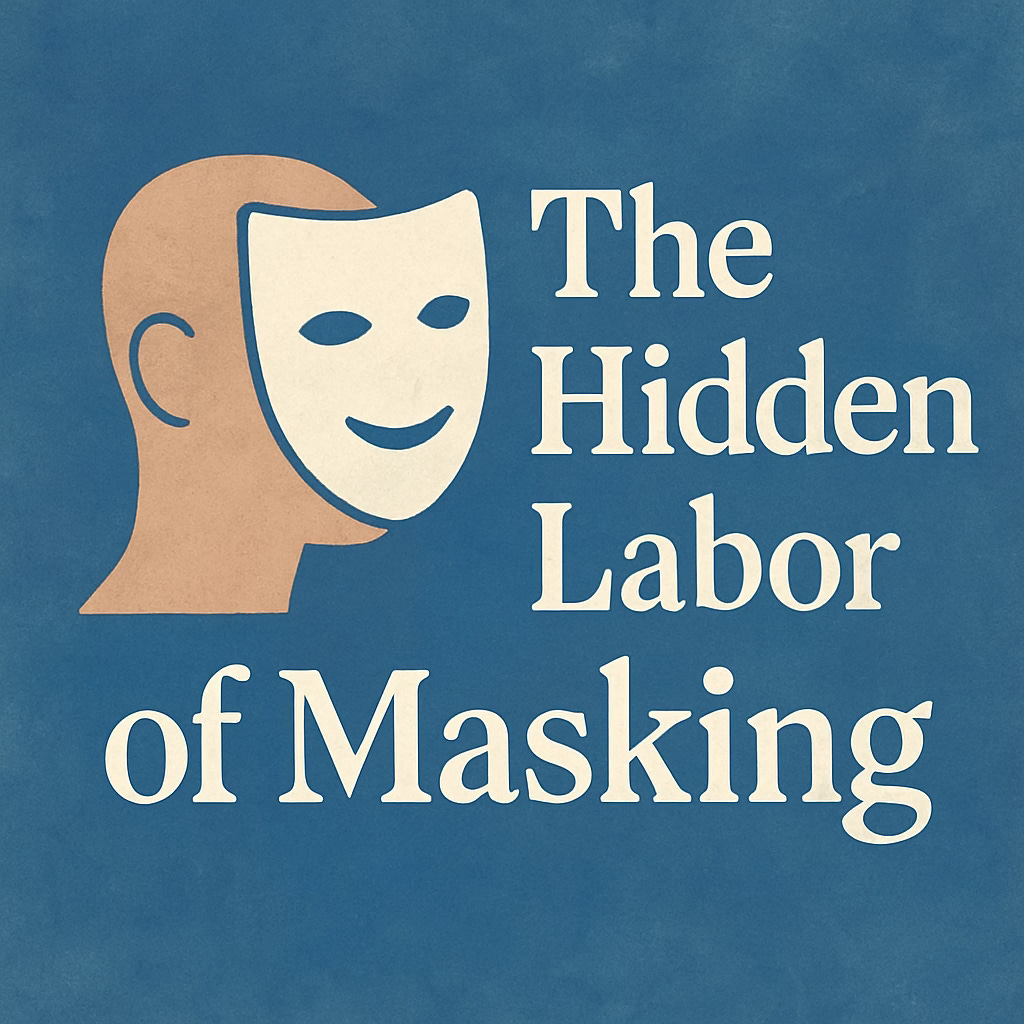Chapter 1: The Hidden Labor of Masking
From the THX Series Hub - Behind the Mask: The Invisible Labor of Neurodivergent Survival
Masking isn’t a strategy. It’s a survival system.
When most people hear “masking,” they think of social camouflage: hiding stims, faking eye contact, scripting conversations. And those are real.
But masking goes deeper.
It’s the quiet, relentless work of regulating the emotions of others before they even realize they’re uncomfortable. It’s the suppression of authentic reactions, not just to blend in, but to protect relationships, resources, opportunities—even personal safety.
For many neurodivergent people, masking isn’t a choice. It’s the unpaid emotional labor of existing in systems not built to support difference.
Masking Through the Lens of the 12 Utilities
(For more on the THX Frameworks, including the 12 Utilities)
Every moment of masking is a moment where the system is failing to deliver:
Availability — Few spaces exist where masking isn’t required.
Access — Participation requires altering the self, not the space.
Security — Survival depends on performance, not authenticity.
Clarity — Social rules are vague, shifting, unspoken.
Ease of Use — Social engagement becomes labor-intensive and depleting.
Consistency — Behavioral expectations vary by person, power dynamic, and context.
Accuracy — Authentic expressions are misread, pathologized, or punished.
Speed — Demands faster emotional regulation than is natural or sustainable.
Closure — Conversations feel incomplete because truth is withheld for safety.
Emotion Evoked — Fear, anxiety, exhaustion, not safety or belonging.
Value — Invisible emotional labor is extracted without acknowledgment.
Resources — No internal replenishment because all energy goes outward.
Masking is managing a broken system at a personal cost.
Why It’s Invisible—and Why It Hurts
Masking is often praised.
"You're so professional."
"You're so easy to work with."
"You make everyone feel comfortable."
But what’s being praised is often the suppression of needs, the containment of pain, and the labor of regulating everyone else’s emotional safety.
Praise without recognition of the cost becomes its own form of harm. It tells the masked person: We value your ability to disappear for our comfort.
The longer masking continues without space for recovery, the closer it moves toward autistic burnout, depression, anxiety disorders, chronic fatigue, and profound emotional disconnection.
Masking Isn’t Just Survival—It’s Risk Management
Underneath every moment of masking is a risk calculation:
If I’m honest about what I see, will I lose safety?
If I react authentically, will I lose credibility?
If I stop managing their emotions, will I lose connection, protection, opportunity?
It’s not vanity. It’s survival math.
Prospect Theory tells us: Loss feels bigger than gain. Masking is a constant, exhausting investment against the potential losses of being seen.
Final Thought
Masking isn’t about deceit. It’s about survival. It’s about carrying the emotional weight of others so they don’t have to carry their own discomfort.
The tragedy isn’t that masking exists. The tragedy is that it’s necessary.
And in naming it, we can begin to dismantle it.
Next - Chapter 2: Why Survival Means Regulating Other People’s Emotions




